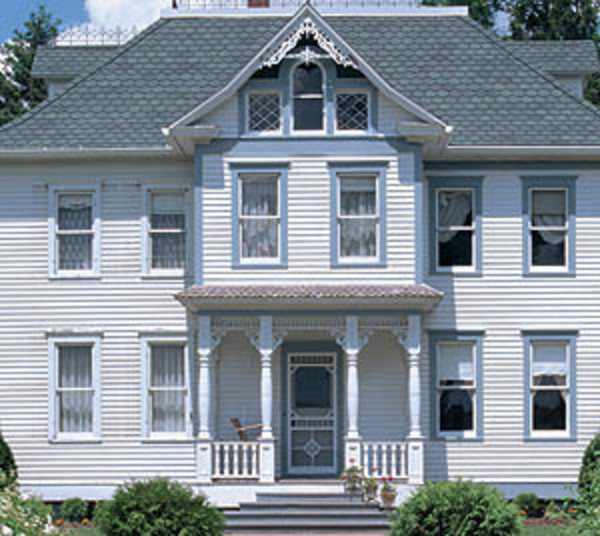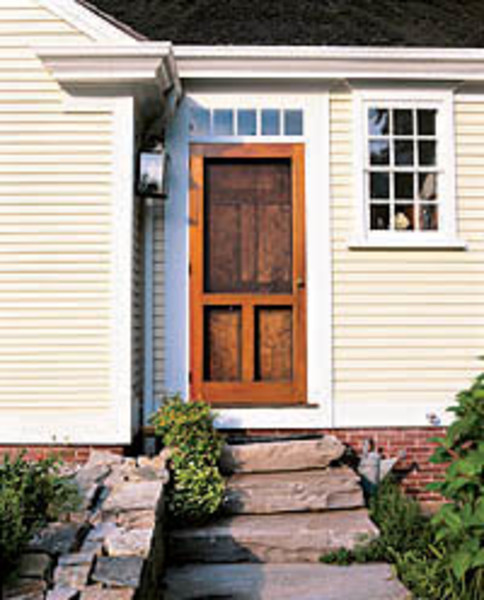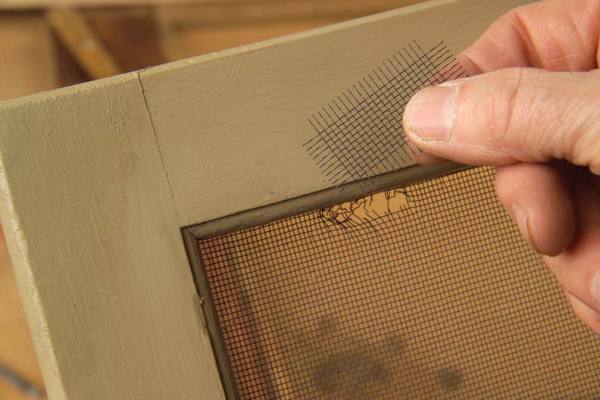Victorian-era doors can be decked with spandrels, brackets, and gingerbread trim. (Photo: Radek Kurzaj)
Unbelievably light, open, and nearly two-dimensional, screen doors are workhorses that still take a beating from over-eager children, anxious pets, and errant softballs. Screens, especially, don’t hold up forever, eventually needing either a patch job or complete replacement. Fortunately, traditional wood screen doors are designed to be repaired, and when hardware or frames are missing or beyond repair, there’s a bounty of reproductions available to fit the screen door look from any era.
Enmeshed in History
Screen doors have been so omnipresent on old houses over the last century that it may be a surprise to learn they were rare before 1870. Though it was a common practice to tack gauze over window openings to thwart insects, wire screening wasn’t even commercially available until about 1830. To improve on the horsehair historically used to make sieves for sifting flour and grains, the Gilbert and Bennett Manufacturing Co. in Connecticut, experimented with mechanically weaving wire screen on looms designed for making carpets. The result was an affordable fine metal cloth that could be stretched on a wood frame.
Three-panel screen doors, such as the one on this Georgian house, were typical of the Plain Style sold in the 1910s and later. (Photo: Grey Crawford)
The improved sifting screens sold well for decades until the Civil War cut off the southern market and business tanked, leaving the company swimming with screening and frames. Then, according to company lore, an enterprising employee coated some sieves with paint, sold them as insect barriers, and a new market was born. The happy accident came at a time when medical science was beginning to connect insects with diseases, and by the turn of the 20th century no house was considered complete without screens on both windows and doors. Flies and mosquitoes are a menace to health, and must be kept out of the home, screams text advertising screen doors in a turn-of-the-century catalog. These doors provide ample protection and will give years of service.
Though often homemade well into the 20th century, by the 1870s screen doors were also a natural product for millwork suppliers and an ideal medium for the fanciful machine woodwork of the Victorian era. Catalogs show door frames divided mid-way by turned spandrels (they serve the same structural purpose as the horizontal lock rail in a panel door) and brackets in corners, some with Eastlake-style complexity, that acted as gussets in what is essentially an empty frame in constant motion.
Such fancy-style screen doors remained in catalogs after 1900 along with other Victorian holdovers like steamboat Gothic porch trim, but designs without the fussy look were already appearing a decade earlier. Examples include straightforward doors with large, open screens on their upper half and a series of differing designs at the bottom—from three narrow, horizontal, rectangular panels to a single rectangle sitting atop two wood panels. These simple patterns were suited to a wide range of house styles and could be ordered in pine (for painting) or oak (for staining and clear finishing). A choice of screening metals was available by then, too—galvanized steel, black wire cloth (painted steel), and copper, which was the most expensive option.
To patch a hole, cut a rectangle of identical screening roughly twice the hole’s size. Next, unravel three wires from the patch edge; bend ends at 90 degrees, close to the weave. Center the patch, then thread the angled wires through the screen and push them flat to secure the patch.
Down to the Wire
The same screening options are readily available today, along with a few new ones including aluminum, bronze, and fiberglass. Before deciding which to use, it’s helpful to know their strengths, literally. According to experts at TWP Inc., a modern supplier of screening materials, stainless steel is the most durable, especially in versions that incorporate the alloy molybdenum, which retards corrosion. Rated for marine use, stainless is the ultimate choice for screen doors at seaside settings, where the damp, salty air is notoriously tough on aluminum and steel.
Bronze is the next strongest and, in terms of being conspicuous, also provides the best visibility, particularly as it darkens with age. Some consider copper screening the most appropriate fit for historic houses, but while it acquires a lovely green patina over time, it is soft and will need replacing more frequently. The weakest screening material of all is fiberglass, but it is also the most affordable and workable, which many find a benefit. In terms of cost, bronze is usually the most expensive, but it can pay to shop around. Many online companies offer screening for less money per square foot than can be found at the local hardware store.
All of the modern screen types are easy to work with and can be cut with lightweight tin snips. The most important thing to remember when replacing screens is to choose fasteners (tacks or staples) of a metal compatible with the screening to prevent galvanic corrosion in which dissimilar metals eat away at each other. Bronze tacks can be difficult to locate but well worth the effort in added years of life to your screen door. Whichever material you choose, install it carefully to make it more durable over time.







